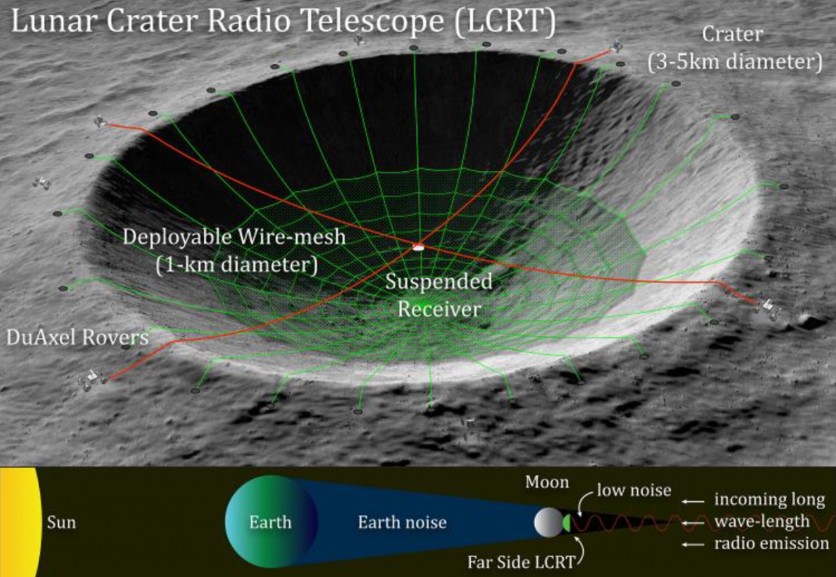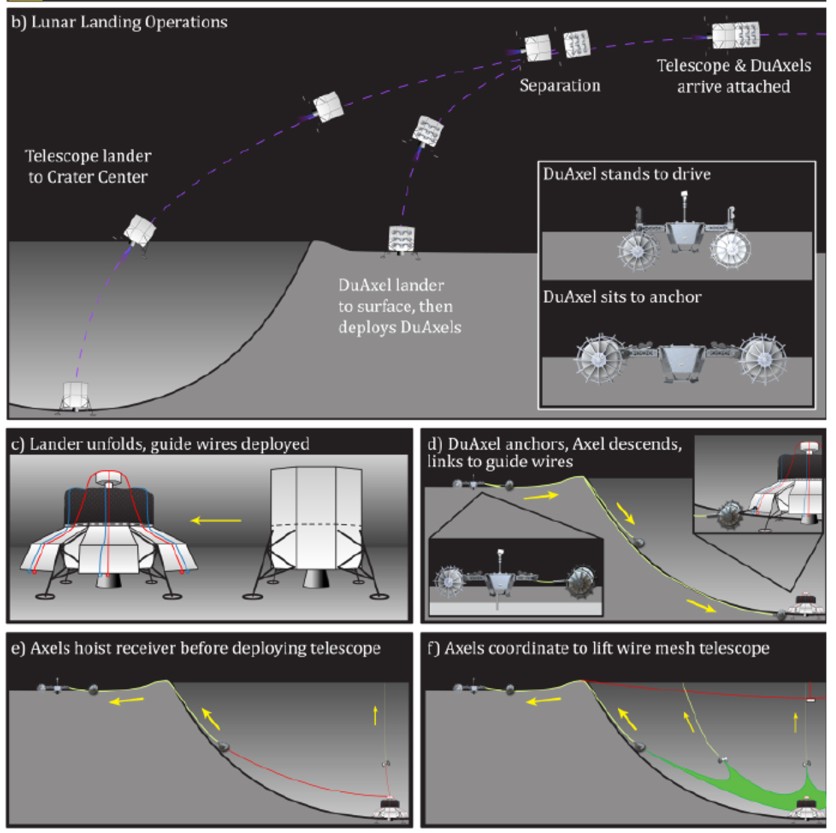On Apr. 8, the National Aeronautics and Space Administration (NASA) formulated a plan to create the possibly largest filled-aperture telescope in the history. This huge telescope will be used to see the 'dark cosmos' or the areas of the moon that are still unseen or undiscovered by the human eyes. What could be hiding there?
NASA builds a telescope plan to see hidden parts of Moon

If you think that you've already seen the full Moon, you're wrong. Apparently, there are parts of the Moon that are not yet being discovered by astronomers and seen by humans.
Experts claim that there are still hidden craters or 'dark cosmos' located at the Moon. These areas are the spots from the natural satellite that are positioned away from the Earth-- making it difficult for astronomers to discover what's underneath the Moon.
With the help of an ultra-long-wavelength radio telescope that will be called the "Lunar Crater Radio Telescope," NASA aims to get inside a crater on the faraway side of the Moon. Once accomplished, the agency said that it will open up other opportunities for them to further study the Moon and other planets.
As reported via Space, the idea behind the huge telescope was proposed by a robotics technologist at NASA's Jet Propulsion Laboratory named Saptarshi Bandyopadhyay.
He explains that the creation of the LCRT "could enable tremendous scientific discoveries in the field of cosmology by observing the early universe in the 10- 50m wavelength band...which has not been explored by humans till-date."
See how the Moon really works up in space

Unfortunately, the proposal for this large telescope is still under process. As of now, NASA's Innovative Advanced Concepts Program awarded $125,000 for a Phase 1 study of the feasibility of LCRT.
Once Bandyopadhyay gets the chance to build the telescope, it will be the largest filled-aperture radio telescope in the solar system. The device will dig a 2- to 3-mile-wide or 3 to 5 kilometers crater on the Moon's dark cosmos. Once done, a 1 km wire-mesh telescope, will then be stretched across the crater by NASA's DuAxel Rovers, or the wall-climbing robots.
Other than this process, the telescope will also come handy for other NASA projects directly related to Earth. Normally, the planet's atmosphere is a good thing for humans since it keeps us alive; however, for Moon astronomers, the Earth's atmosphere could be a hindering factor to receive wavelengths from the Moon.
If LCRT comes true, this factor will be wiped away.
"An ultra-long-wavelength radio telescope on the far side of the Moon has tremendous advantages compared to Earth-based and Earth-orbiting telescopes," Bandyopadhyay said in his proposal abstract.
For now, it is waiting for progress.




![Most Useful Google Chrome Keyboard Shortcuts You Need to Know to Improve Your Browsing Experience [2024]](https://d.techtimes.com/en/full/449047/most-useful-google-chrome-keyboard-shortcuts-you-need-know-improve-your-browsing-experience-2024.jpg?w=184&h=103&f=476d29fd60df70a67f6679f99a2ca6d0)